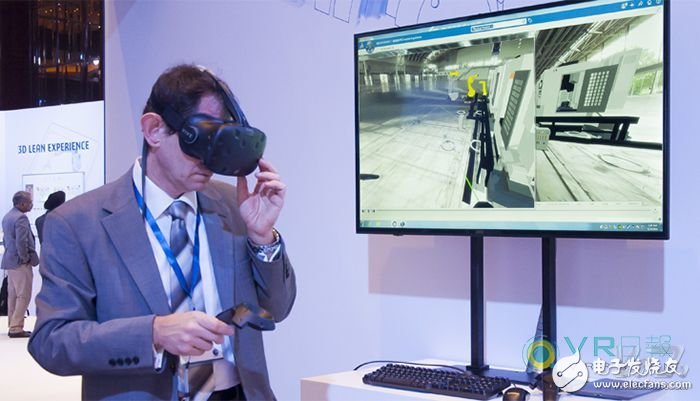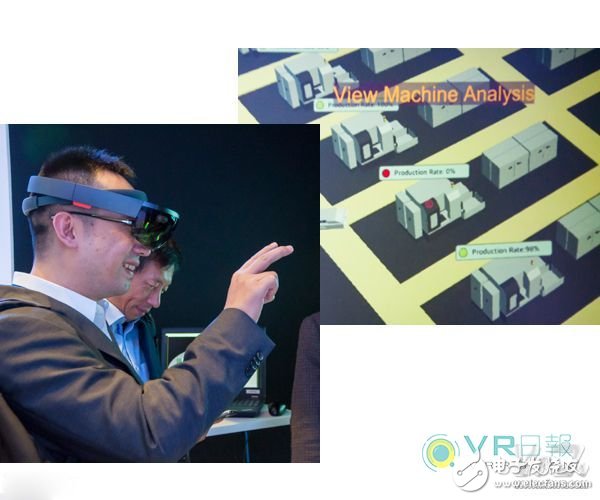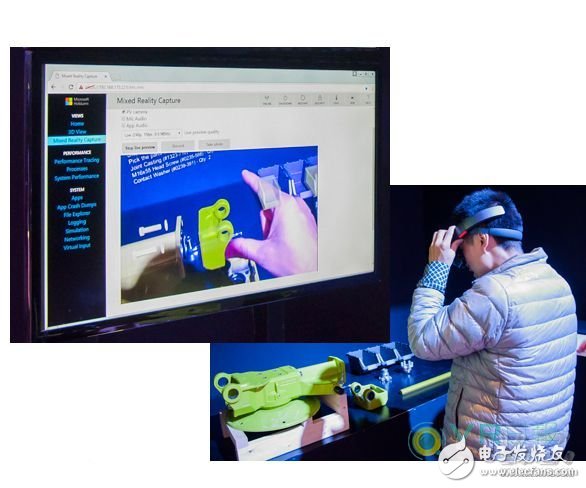VR network editors learned that industrial design software and PLM software Dassault Systems recently rushed to the current VR (virtual reality) and AR (virtual reality) application boom at the Dassault Systèmes Shanghai User Conference. The latest public display of various VR and AR applications combined with manufacturing application scenarios can not only remotely monitor the global factory production status, but also can be used for new personnel training and on-site construction operations. With the gradual maturity of VR and AR technologies, in recent years, consumer applications have begun to blow to more professional industrial applications, such as manufacturing, and began to integrate with AR and VR applications. For example, BMW, Audi and other car manufacturers began to combine VR to improve the way car products are designed. Two months ago, another industrial design software vendor, PTC, also launched an AR application production platform designed for industrial use to simplify the AR application development process, so that even enterprise users who do not have AR technology development capabilities can The operation can help the designed 3D drawing model to achieve the AR effect. Pascal Daloz, Dassault Systèmes' brand and executive vice president of corporate development, who is responsible for planning Dassault's global product strategy, also affirms that VR and AR technologies will transform future manufacturing processes and help drive manufacturing transformation from existing plants to smarter factory. Pascal Daloz also revealed in the meeting that a major strategy for the company's products next year will focus on industrial VR and AR applications. He said that the company has been able to keep up with the development of hardware technology in industrial software development, and is ready to support these VR and AR devices, hoping to put all the data on the Dassault 3D Experience platform. The data including 3D mechanical design drawings, machine equipment, factory production lines and management operations can be presented in the future through VR or AR. The reason why we want to embrace VR and AR technology, Pascal Daloz bluntly, using the immersive visual effects brought by VR and AR technology, is very suitable for industrial applications, and will bring another new development design and production to the manufacturing industry. Management mode. In terms of engineering design, VR and AR equipment provide another new way for engineers to simulate whether a validated 3D model can meet production requirements, not only to closely match these virtual 3D models to real-world machines. The equipment mode is presented, and in the future, the data collected from the real machine equipment operating on the production line can be provided to provide management personnel with the ability to directly manage the production status of the production line equipment by means of VR and AR equipment. However, even though VR and AR devices can already be used on the consumer side, Pascal Daloz admits that VR and AR devices must be able to achieve more professional manufacturing applications, and the development is still not mature enough. The bottleneck card is not available at this stage. To meet the professional needs of industrial applications in terms of operational accuracy, ease of use, safety and related regulations. For example, HTC Vive devices are currently unable to use wireless transmission to transmit virtual images, which limits the range of operations of operators. In addition, industries that have higher requirements for fine operation, such as the automotive industry, will also use them. There are a lot of restrictions, but he thinks that this time will not last too long. "When wearing VR and AR equipment to reach the commercial stage of manufacturing applications, it will take at least 8 months of preparation," he said. In order to accelerate the development of industrial VR and AR applications. Pascal Daloz said that he is continuing to collaborate with various VR and AR equipment manufacturers, such as HTC, Microsoft and Samsung, by combining VR and AR technologies with Dassault's industrial software, such as CaTIa. , Delmia, etc., began to test in various manufacturing scenarios. He also mentioned that the current price of a set of AR or VR devices is not cheap. For example, the Microsoft AR Glasses HoloLens Developer Edition is priced at nearly $3,000, but he predicts that the price of VR and AR devices will be in the next two years. A drastic reduction will make it easier for manufacturing to enter VR and AR applications, and will also drive more and more industrial applications. More than 800 Dassault customers participated in the Dassault Systèmes User Conference held in Shanghai, China. Dassault also took the VR and AR winds in the live experience booth and exhibited the latest technology applications combined with the manufacturing industry. For example, one example of integration with AR technology is the application of a Future Manufacturing Cockpit, which combines Dassault's digital factory simulation software, Delmia, with AR equipment to show current customers worldwide in front of the wearer. Each factory base, and list the daily production capacity and production line status of each factory, to help the top managers of multinational large enterprises to easily grasp the information of factories around the world, from the global view of global factory distribution to the capacity evaluation of single production lines. Make the right decision. On-site operators can wear a 3D virtual sphere that simulates the appearance of the Earth as long as they wear Microsoft AR glasses. This sphere will show the current daily production capacity of each customer's base in the world, such as production quality. Information such as expenditure cost, delivery rate, etc., just select the factory area you want to see, you can enlarge the factory park screen, then go to the factory to watch, and even view the current production status of each production line, once you encounter a certain production line When there is a problem with the output, you can also see a red warning signal appearing above the production line to remind you that you can call up the product by simply clicking on the icon with the problematic line equipment. All the production work views of the line, including the relationship between productivity, equipment temperature, pressure, etc., help you find the key to the machine failure and find the problem early. Switching to the 3D virtual experience way also makes the original complicated factory production process easier to understand. When the reporter uses the AR device experience on site, it is easy to monitor each piece through the entire virtual factory. Whether the production status of the production line is normal, but there are some delays in the operation response when the AR equipment is operated on site. For example, after waiting for a period of time, it will take a while to enter the next browsing screen. The on-site commentator also said that the application is currently available. In the testing phase, the future will also be from the feedback of customers to continue to improve. Another example of AR application related to the manufacturing industry is the application of AR application in factory learning and training. It simulates the on-site assembly process through virtual execution, which can help newcomers to understand the on-site operation and improve production efficiency. Safe with work. The narrator also showed the complete operation of how to assemble a set of truck parts with AR equipment. The wearer can see a tutorial guide from the AR device screen that tells you how to assemble these different parts, including how to assemble, pick parts, etc. However, in the field operation, it is impossible to operate on the virtual object in front of the eyes, such as dragging or moving, and can only be performed by simply selecting the next assembly step by finger or sound. Not only can the new personnel training be used, but the on-site commentator said that in the future, it will be possible to use the factory on-site assembly. For example, the field can modify the assembly actions or steps of the virtual parts. The modified data identifiers will also be modified by the AR device to synchronize the modified data back to the software platform of the cable. Xiaobian has something to say: AR and VR technology are entering the industrial field sooner or later. As the cost of AR and VR equipment decreases and the technology matures, we will see more and more industrial-grade AR and VR applications and solutions. Program. Pod Systems,Pod Vape System,Empty Pod System Vape,Disposable Pod Vape Systems Shenzhen Wei Ka Technology Co.,Ltd. , https://www.zgarvape.com


